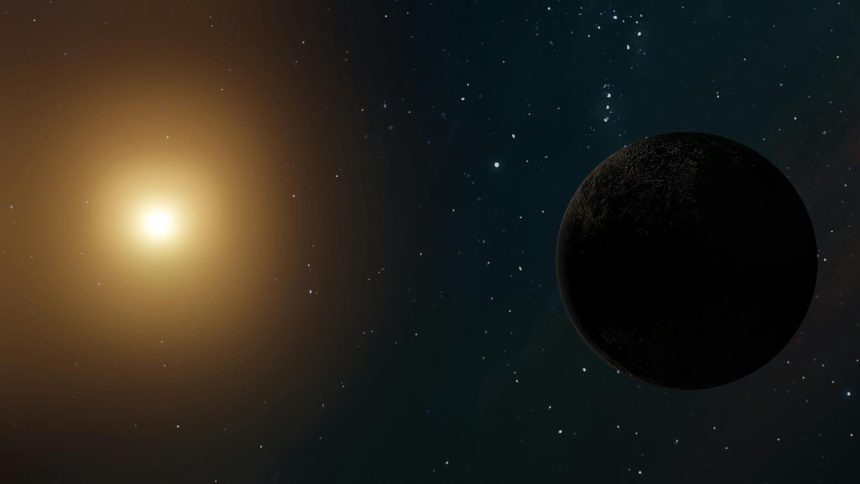3i-atlas-interstellar-visitor
3I/ATLAS: Alien Probe or Cosmic Mystery?
The universe has a way of throwing curveballs, and its latest offering is a doozy. A mysterious object, designated 3I/ATLAS, is hurtling towards our solar system at speeds that defy conventional understanding, baffling scientists and sparking wild speculation. Could this enigmatic visitor be an alien-made probe, mirroring humanity’s own interstellar ambitions? Join us as we dive deep into the science, the theories, and the sheer cosmic wonder surrounding 3I/ATLAS.
## Unpacking the Enigma of 3I/ATLAS
When astronomers first detected 3I/ATLAS, its trajectory and velocity immediately set it apart. Unlike the vast majority of comets and asteroids that follow predictable paths within our solar system, this object is on a hyperbolic trajectory, meaning it’s not gravitationally bound to our Sun and will eventually leave. But it’s not just the path; it’s the speed. 3I/ATLAS is moving significantly faster than most objects of similar size observed originating from beyond our solar system. This has led to intense scientific scrutiny and, inevitably, some truly mind-bending hypotheses.
### The Speed Conundrum: Too Fast to Be Natural?
The sheer velocity of 3I/ATLAS is what initially raised eyebrows. Its speed suggests it either experienced a powerful gravitational slingshot from a star system far more massive than our Sun or, perhaps, was propelled by something entirely non-natural. Scientists are accustomed to the gravitational dance of celestial bodies, but the observed speed of 3I/ATLAS seems to push the boundaries of what is expected from natural cosmic processes alone. This discrepancy is the bedrock of the more extraordinary theories surrounding its origin.
### A Visitor from Afar: The Interstellar Connection
The “I” in 3I/ATLAS stands for “interstellar,” confirming that its origin lies beyond the Sun’s gravitational embrace. This is a relatively rare phenomenon, with only a handful of such objects, like ‘Oumuamua and Borisov, having been confirmed in recent years. However, 3I/ATLAS is distinguished by its unusual characteristics. Its composition, based on preliminary observations, also appears to be different from typical comets or asteroids, adding another layer to its mystique.
## Theories Abound: From Natural Phenomena to Alien Artifacts
The scientific community, while grounded in empirical evidence, also possesses a healthy dose of curiosity and imagination. When faced with something as peculiar as 3I/ATLAS, a range of explanations emerges, from the plausible to the profoundly speculative.
### The Natural Explanations: Pushing the Boundaries
Astronomers are diligently exploring all natural possibilities. Could 3I/ATLAS be a rogue object ejected from a distant star system with an unusually energetic past? Perhaps it’s a type of celestial body we haven’t encountered before, with unique properties that explain its speed. Researchers are analyzing its spectral data for clues about its composition, hoping to identify its home system and understand the forces that shaped it.
### The “Alien Probe” Hypothesis: A Bold Comparison
The most sensational theory, and one that has captured the public imagination, is the possibility that 3I/ATLAS is not a natural object at all, but an artificial construct. This idea draws parallels with humanity’s own endeavors to send probes like Voyager 1 and 2 beyond the solar system. The comparison is compelling: if we can build spacecraft to explore the cosmos, why couldn’t another civilization have done the same, or even better?
#### Echoes of Voyager: Humanity’s Own Interstellar Reach
Our own Voyager probes, launched decades ago, are now venturing into interstellar space. They carry messages and symbols of humanity, designed to be found by any intelligent life that might exist. The idea that 3I/ATLAS could be a similar emissary, perhaps from a civilization far older and more advanced than our own, is a captivating thought experiment.
#### What Would an Alien Probe Look Like?
If 3I/ATLAS were an alien probe, what might its purpose be? Scientists speculate it could be a reconnaissance mission, gathering data on our solar system. It might be a dormant or active spacecraft, perhaps even a relic of a long-lost civilization. The lack of any discernible propulsion system or artificial signals, however, makes definitive identification impossible at this stage.
## The Scientific Process: Observation, Analysis, and Speculation
The detection of 3I/ATLAS has galvanized the astronomical community. Telescopes worldwide are being trained on the object, gathering as much data as possible before it recedes from view.
### Gathering Data: The Role of Telescopes and Instruments
From powerful ground-based observatories to orbiting telescopes like Hubble and James Webb, astronomers are using every tool at their disposal. They are analyzing the light reflecting off 3I/ATLAS to determine its size, shape, and composition. Spectroscopic analysis can reveal the presence of various elements and molecules, offering clues about its origin and history.
### Challenges in Observation: A Fleeting Visitor
The transient nature of interstellar objects presents significant observational challenges. 3I/ATLAS is moving rapidly, and its time within our observable range is limited. Astronomers must work quickly to capture crucial data before the object becomes too distant or too faint to study effectively.
## What Does This Mean for Us?
The arrival of 3I/ATLAS, whether natural or artificial, is a profound reminder of our place in the vast cosmos. It ignites our curiosity and prompts us to consider the possibilities that lie beyond our immediate understanding.
### Expanding Our Cosmic Perspective
Each interstellar object that visits our solar system offers a unique opportunity to learn about the diversity of planetary systems and the processes that shape them across the galaxy. 3I/ATLAS, with its unusual characteristics, could rewrite our understanding of how objects are formed and ejected from other star systems.
### The Search for Extraterrestrial Intelligence (SETI)
While not a direct signal, the possibility of an alien artifact like 3I/ATLAS fuels the ongoing search for extraterrestrial intelligence. It underscores the importance of continuing our efforts to listen for signals and to remain open to the idea that we are not alone in the universe. The scientific community’s rigorous approach to analyzing 3I/ATLAS, even the most speculative theories, is a testament to humanity’s drive to explore and understand.
## The Future of Interstellar Exploration
The study of objects like 3I/ATLAS is at the forefront of astronomical research. It pushes the boundaries of our technology and our theoretical models.
### Technological Advancements Driven by Discovery
The challenges posed by these fleeting visitors often spur the development of new observational techniques and more sensitive instruments. The ongoing quest to understand interstellar objects like 3I/ATLAS contributes to the advancement of astronomy and space exploration as a whole.
### A Glimpse into the Galactic Neighborhood
As we continue to detect more interstellar visitors, we gain a richer picture of our galactic neighborhood. We are learning about the prevalence of different types of celestial bodies and the dynamics of star systems throughout the Milky Way.
The journey of 3I/ATLAS is far from over, and its ultimate secrets are yet to be fully revealed. Whether it proves to be a natural marvel or an artifact of an advanced civilization, its passage through our solar system is a captivating event that reminds us of the infinite wonders the universe holds.
***
*This article was researched and written by the team at thebossmind.com, copyright 2025.*
**Sources:**
* [NASA Jet Propulsion Laboratory](https://www.jpl.nasa.gov/)
* [European Space Agency (ESA)](https://www.esa.int/)
***
**
Featured image provided by Pexels — photo by Zelch Csaba










